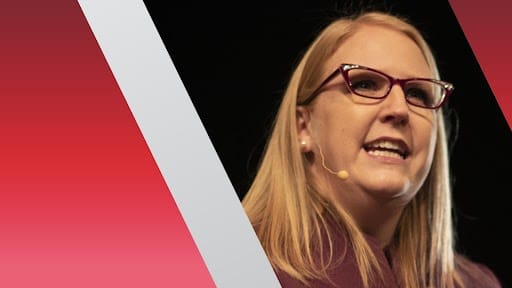
CHICAGO — Staffing issues are front of mind for care providers around the country, but the pressure to hire new workers is not the only significant issue staring them in the face.
Cara Silletto, employee retention expert and president of Magnet Culture, addressed the other side of the coin at the LeadingAge Annual Meeting in Chicago.
Silletto reminded attendees of her session that current staffing issues have created a surplus of facilities in the process of hiring. At the same time, a savvy workforce is leveraging an abundance of online tools to seriously weigh their options.
As caregiving professions continue to rely more on a younger pool of workers, they also have to reckon with a generation that has the confidence to change jobs.
Younger workers have reacted strongly against the “stick it out” philosophy of their parents’ generation and have much less tolerance for unsatisfactory work conditions. “Now people say, ‘I’m not happy, I’m out,’” Silletto observed.
Because so many facilities are hiring, these employees can leave a workplace and be reasonably assured of finding new positions soon.
Together, these factors lead to a “perfect storm” that makes employee retention extremely challenging, said Silletto. However, there are still many actionable steps that can address these problems.
“Even having 20% to 25% turnover every year is disruptive,” Silletto said. “So let’s plan for it. Let’s create a well-oiled machine that can operate in this environment that we’ve been dealt.”
Making employees feel heard
“We’re going to have to turn and look inside at ourselves in order to operationalize turnover,” Silletto said. In doing so, it’s important to not assume why workers quit.
Employee retention is not always a simple issue of pay and benefits. Open lines of communication and respect are often equally, or even more, significant to workers.
Silletto suggested beginning any employee retention roadmap with a listening tour, emphasizing that the goal should be to give employees the freedom and safety to voice their concerns, not just focus on defending current practices.
“Understand that people will be intimidated by you being out on the floor,” Silletto told attendees. She also emphasized ensuring that everyone is being heard — not neglecting third-shift workers or others who may not typically get as much attention.
Setting sustainable work goals
Another key concept to consider is “scope creep” — the ways in which challenges in the industry have pressured employers to place increasingly demanding workloads on employees over time.
Silletto acknowledged the impact of these challenges — such as regulations, funding and the impacts of the COVID-19 pandemic — but maintained that recognizing and addressing scope creep is a crucial step in boosting employee retention.
“I need us to realize this scope creep has happened and now there are organizations out there who have unrealistic expectations for their folks,” she said. Asking employees to go above and beyond every single day can leave star employees feeling burnt out and regular, reliable employees feeling defeated.
Investing in managers so they can invest in workers
Scope creep has impacted management too, Silletto said.
“I have leaders in senior care who tell me, ‘Cara, recruiting used to be about 15% of my job, maybe 20%, and now 40% to 60% of my time is on recruiting, and onboarding, and all the job postings and hunting down no-shows.”
Even beyond the added burden for managers, this managerial scope creep takes away time that they could be spending on mentoring employees — a role that is only becoming more vital, according to Silletto.
Due to generational differences, younger employees tend to want mentoring and frequent positive feedback as they learn and adjust to new roles. When managers have the tools and time they need to address these needs, they can act as a buffer between employees and challenges in the workplace — making sure that employees continually feel seen and supported even through those challenges.
Treating new employees with care
“The new hires are your greatest flight risk,” Silletto said, adding it’s vitally important to treat them with respect and care during onboarding. “The last thing we want is to give them the worst shift, or the worst grunt work, or the worst equipment.”
Silletto warned against allowing hazing, or established workers treating new coworkers as second-class citizens until they’ve been on the job for an arbitrary period of time.
While it might be tempting to gloss over such behavior if these established workers are vital to the facility, it’s important to count the costs of the behavior as well. A toxic work environment can directly lead to the degrading of a culture of genuine care in the facility and to a revolving door of employee turnover.
The difficulties of finding time and funding for employee retention programs are clear, but Silletto suggested that the cost of not implementing them could very well be higher.
Onboarding is inherently expensive and demands critical time and resources from management. Losing workers due to burnout or a toxic work environment also keeps facilities reliant on new, untested employees instead of allowing experience and expertise to grow over time.
Addressing the concerns of both employees and management could be a key roadmap to addressing the issues of both cost and staffing.



